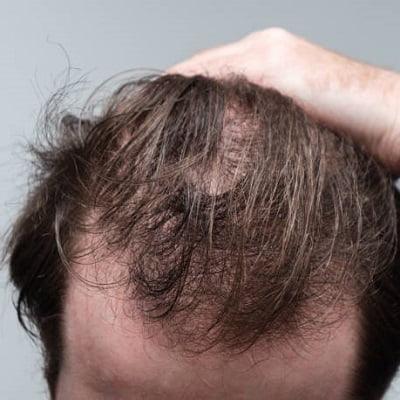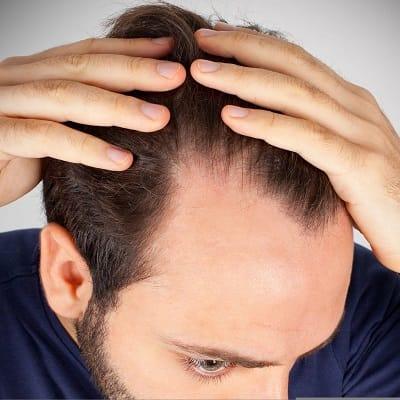Hair loss is a common concern that affects millions of people worldwide. While it’s often associated with ageing, it can occur at any stage of life and for various reasons. Understanding the underlying causes of hair loss in Islamabad is essential for effective prevention and treatment.
This blog will explore the top four reasons for hair loss, shedding light on the complex factors contributing to this issue. So, keep reading!
Genetics: The Role of Hereditary Hair Loss
One of the most common reasons for hair loss is genetics, which significantly determines whether an individual will experience hair thinning or baldness. Hereditary hair loss, also known as androgenetic alopecia, is the leading cause of hair loss in both men and women.
In men, androgenetic alopecia typically manifests as a receding hairline and thinning at the crown, often leading to complete baldness. It tends to cause diffuse thinning throughout the scalp rather than distinct bald spots in women. The genetic predisposition to androgenetic alopecia can come from either the mother’s or father’s side of the family.
While hereditary hair loss is not entirely preventable, treatments, such as minoxidil and finasteride, can slow down its progression and promote hair regrowth. Additionally, hair transplant surgery can provide a more permanent solution for those seeking to restore lost hair.
Hormonal Changes: The Impact on Hair Health
These changes can significantly influence the health and growth of hair. These changes can occur due to various factors, including age, medical conditions, and lifestyle choices. Some of the most notable hormonal causes of hair loss include:
- Pregnancy and Postpartum Hair Loss: Pregnancy causes significant hormonal fluctuations, leading to thicker, healthier hair during pregnancy. However, many women experience postpartum hair shedding after childbirth due to a drop in estrogen levels. This temporary condition typically resolves within a few months as hormone levels stabilize.
- Thyroid Disorders: Thyroid hormones play a crucial role in regulating metabolism, and an imbalance in thyroid function can disrupt the hair growth cycle. Hypothyroidism and hyperthyroidism can both contribute to hair loss. Proper diagnosis and treatment of thyroid disorders are essential to addressing associated hair loss issues.
- Polycystic Ovary Syndrome (PCOS): PCOS is a hormonal disorder that affects many women of reproductive age. It leads to elevated levels of androgens, which can cause hair thinning and excessive facial and body hair growth. Managing PCOS through lifestyle changes, medication, or hormone therapy can help mitigate these effects.
Lifestyle and Dietary Factors: The Impact of Nutrition and Stress
How we live our lives and the foods we consume can significantly influence the health of our hair. Here are two key factors to consider:
- Poor Nutrition: A diet lacking essential nutrients, especially proteins, vitamins, and minerals, can weaken hair and contribute to hair loss. Iron deficiency anaemia, for instance, is a common nutritional issue associated with hair loss. A balanced diet with adequate protein, vitamins (particularly biotin and vitamin D), and minerals (such as iron and zinc) can help maintain healthy hair.
- Stress: Chronic stress can lead to telogen effluvium, where hair prematurely enters the resting phase of its growth cycle and eventually falls out. Stress management techniques like meditation, exercise, and therapy can help reduce the impact of stress-related hair loss.
Hair Care Practices: Styling and Products
How we style and care for our hair can also contribute to hair loss. While some practices are apparent culprits, others may come as a surprise. Here are a few examples:
- Tight Hairstyles: Wearing hairstyles that pull on the hair follicles, such as tight ponytails, braids, or cornrows, can cause hair loss called traction alopecia. Over time, this repeated stress on the hair can lead to permanent damage and hair loss in the affected areas.
- Heat and Chemical Damage: Frequent use of heat styling tools like straighteners and curling irons and exposure to harsh chemical treatments like bleaching and perming can weaken hair and cause breakage. Over time, this can lead to noticeable thinning.
- Poor Hair Hygiene: Inadequate hair washing and scalp care can lead to the buildup of dirt, oil, and dandruff, which can clog hair follicles and contribute to hair loss. Maintaining good hair hygiene practices is essential for healthy hair.
The Conclusion!
Hair loss is a common concern attributed to various factors, including genetics, hormonal changes, lifestyle choices, and hair care practices. Understanding the specific cause of hair loss is essential for effective prevention and treatment.
Consulting with a healthcare professional or dermatologist at Enfield Royal Clinics Islamabad is advisable for anyone experiencing significant or persistent hair loss to determine the underlying cause and explore appropriate treatment options.






Leave a Reply